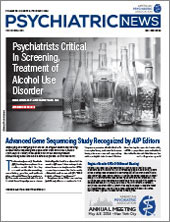Despite the rising number of overdose deaths and an estimated 17.3% of people aged 12 or older meeting criteria for substance use disorders
(SUDs) in 2022, many medical education curricula
lack fundamental teachings to prepare future physicians to properly treat and counsel patients with SUDs and to change the clinical climate surrounding substance use. Our team of medical students sought to increase education in addiction psychiatry/medicine and harm reduction in our medical school curriculum at Emory University School of Medicine through a student-led advocacy initiative.
Our initial efforts focused on introducing medical students to important harm reduction principles from the beginning of their training. In the context of
annual overdose deaths rising above 100,000 in 2022, we first added a student-led training on naloxone administration to reverse opioid overdose and naloxone co-prescription for first-year medical students. We also added content on counseling patients with or at risk of developing SUDs to a motivational interviewing session for first-year students. This included materials on screening for SUDs, guidelines for prescribing opioids, and a new case-based learning session about alcohol use disorder.
Given the complexity of SUDs and implications in virtually every field of medicine, we sought to integrate addiction psychiatry/medicine and harm reduction content throughout both the preclinical and clinical curricula. Collaboration with the pharmacology thread director has resulted in addiction-related content in nearly every course of the preclinical curriculum. To enhance the already existing reproductive health curriculum, our group created a series of handouts on substance use during pregnancy with plans to integrate this information into the OB-GYN clerkship. We are also collaborating with several clerkship directors to create a pediatric injury prevention workshop, facilitate outpatient addiction psychiatry opportunities, and distribute Alcoholics Anonymous and Narcotics Anonymous meeting schedules to students during their primary care rotations.
To adequately prepare future clinicians, medical school curricula must be constantly adapted to the evolving medical field in which they operate. Change can be slow when topics are
stigmatized, as is the case for addiction. The well-established existence of biases among both students and health care professionals makes early career education crucial. At our institution, faculty have previously highlighted the need for more addiction-related content in the curricula of medical school and residency training programs; however, student-initiated advocacy was the catalyst to make many of those necessary changes.
Student advocacy may present with its own challenges, but it has the unique capacity to drive change. For this initiative, change was established through persistent lobbying for the inclusion of content to many faculty members and administrators over the course of several years, ultimately leading to formal approval from our institution’s Executive Curriculum Committee. Curricula have limited space, leading to hesitancy to add new information. Other topics may need to be cut or reduced to allow this change. In our case, several naloxone trainings were conducted prior to advocating for the topic to have a permanent place in the curriculum. Allies within the faculty became particularly important in demonstrating the sustainability of the naloxone training and other curriculum proposals beyond graduation of the student educators.
As we continue to tackle obstacles and embrace the unique strengths associated with student-led change, our hope is to create an addiction psychiatry/medicine thread and advocate for space throughout every part of the curriculum to teach students about SUDs, the identification and treatment of patients with SUDs, and prevention measures. We are eager and optimistic for continued, lifesaving change and hope that our efforts serve as a guide to other medical students and schools as they embrace the teaching of addiction-related competencies in their curricula. ■
